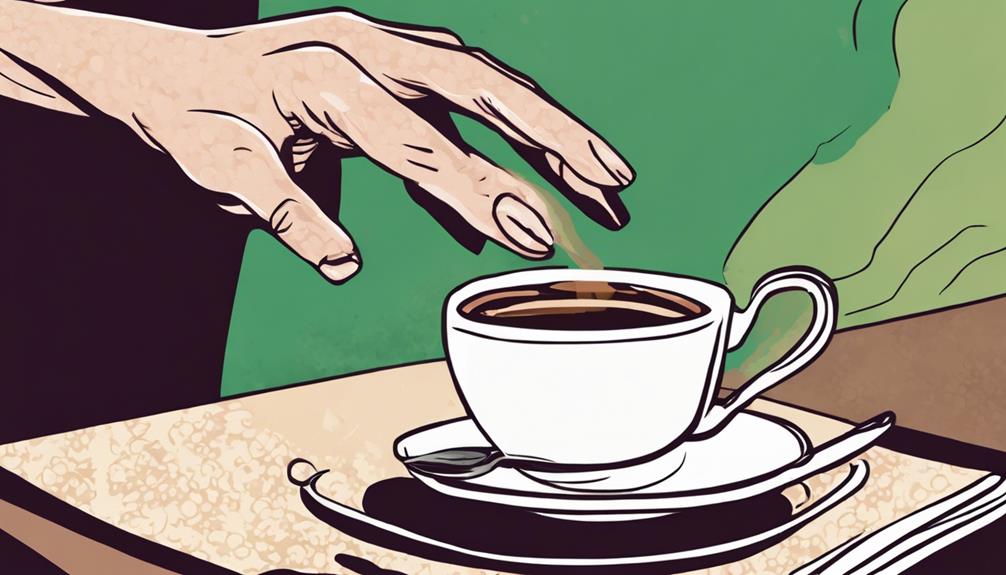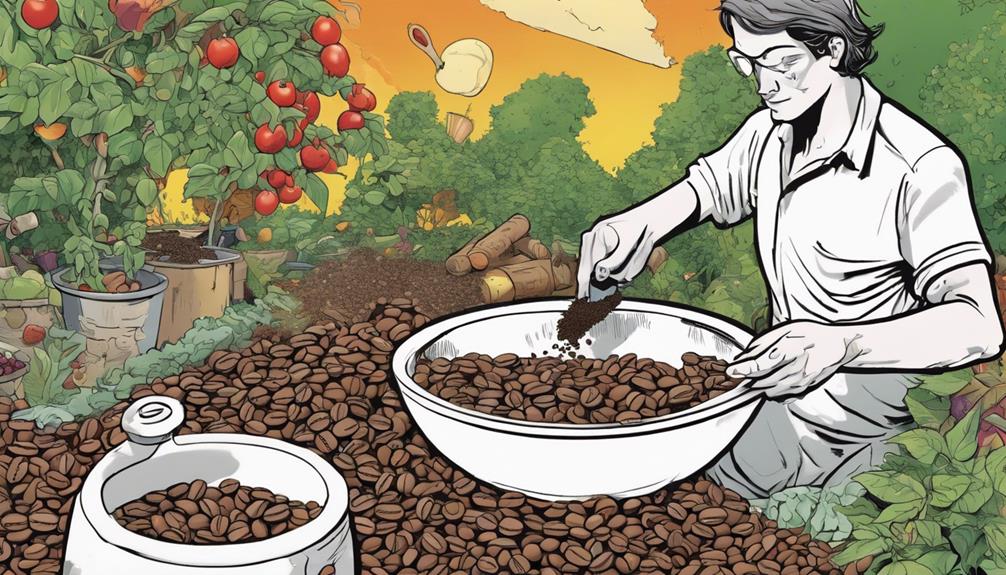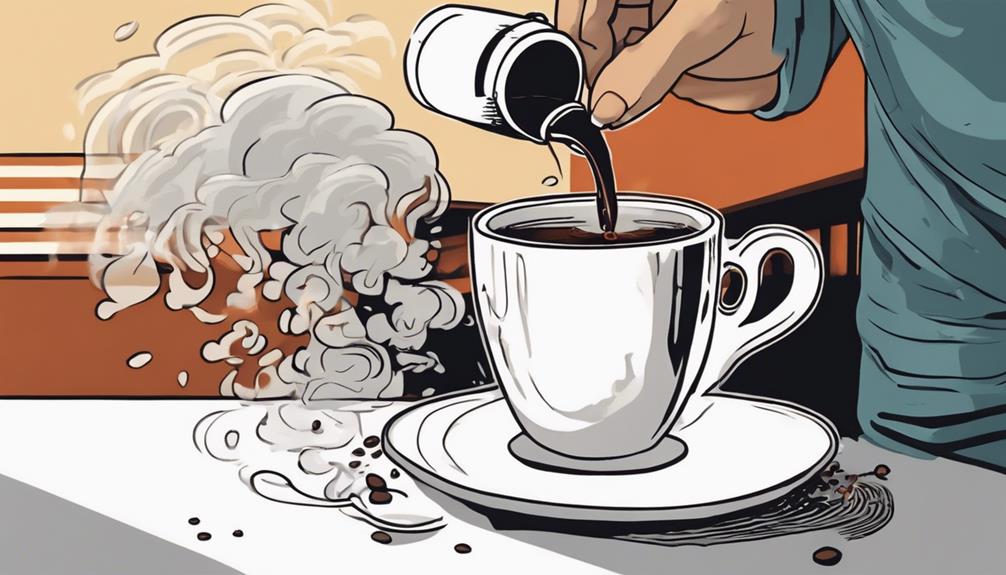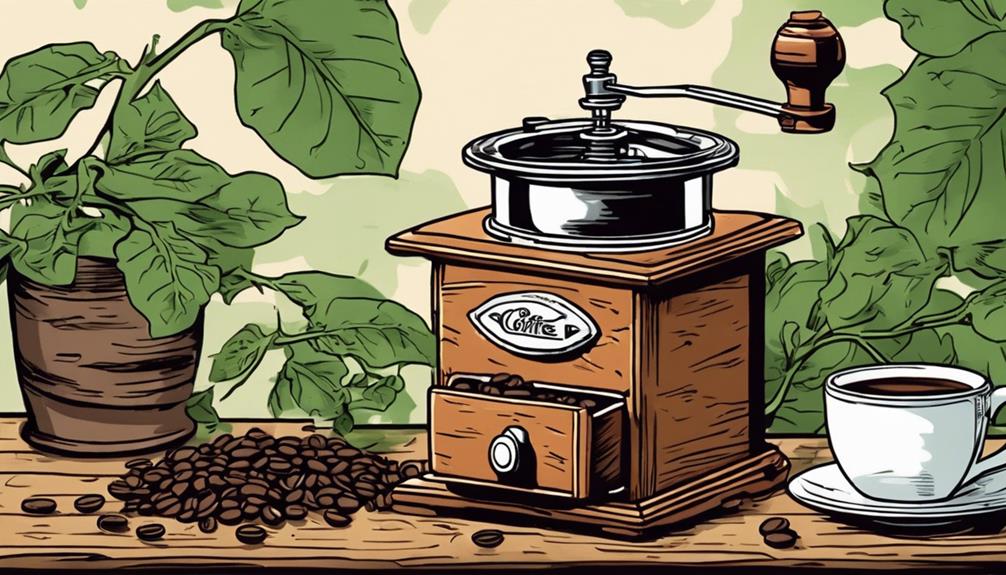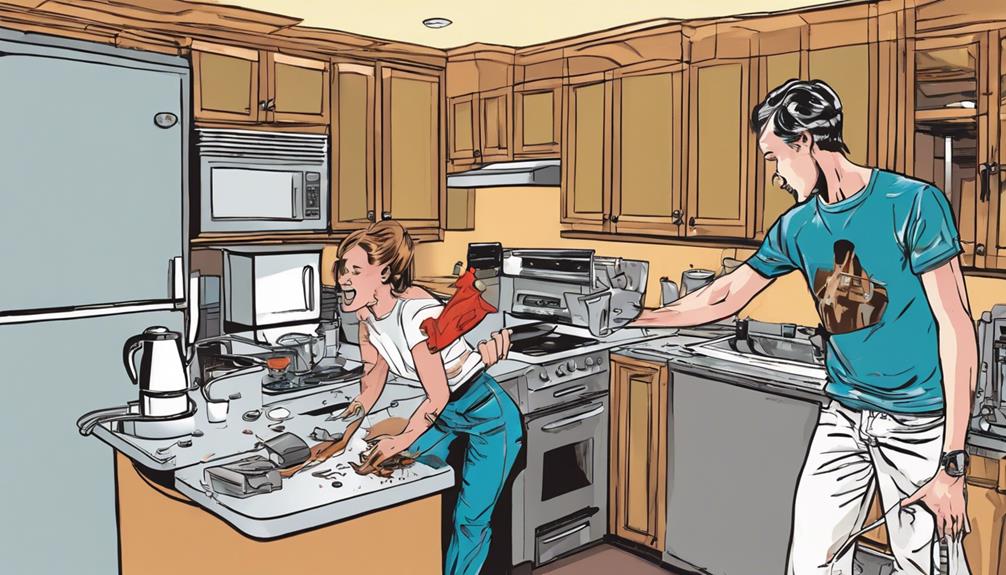To invite someone out for coffee, consider choosing a comfortable location in the city center or a new spot to create a laid-back atmosphere. Connect over shared interests such as hiking, reading, or music during your conversation. Suggest a specific time and date for the meeting in a courteous manner. Show confidence while still respecting their independence. Set up the date promptly to avoid any confusion. Pay attention to nonverbal cues and subtly gauge their level of interest. Provide value beforehand and utilize effective email techniques to arrange the meeting seamlessly. This straightforward approach can result in a wonderful coffee date experience with the individual you admire!
Key Takeaways
- Be straightforward and polite in your invitation approach.
- Express interest in getting to know them over coffee.
- Propose a specific date and time for the meetup.
- Confirm details and finalize the plan respectfully.
- Show confidence, respect, and kindness throughout the process.
Casual Coffee Spot Selection
When picking a location for a casual coffee date, go for a cozy coffee shop downtown or a new spot to try that aligns with both your preferences for a comfortable and enjoyable meetup.
It's vital to select a venue that's comfortable and practical, creating a conducive environment for conversation. Search for spots that offer a cozy ambiance, perfect for a relaxed coffee date where you can unwind and engage in meaningful discussions over a cup of coffee.
For a casual coffee date, the setting plays an important role in setting the tone for the meetup. Choose a location that's comfortable and suitable for a laid-back conversation.
Whether it's a quaint coffee shop with a warm atmosphere or a trendy new spot to explore, make sure the place resonates with your idea of a cozy and relaxed setting for a coffee date.
Finding Common Interests

When preparing for your coffee date, focus on finding common interests to connect with the other person. Sharing hobbies, discussing mutual interests like hiking or music, and building a meaningful connection can make your conversation engaging.
Shared Hobbies Exploration
To establish a connection when asking someone for a coffee date, explore mutual hobbies such as hiking, reading, or music preferences. Finding common interests can pave the way for a more engaging and enjoyable conversation.
Here are some tips to help you immerse yourself in shared hobbies and interests:
- Discuss Recent Hiking Trails: Share your favorite hiking spots and inquire about theirs. Talking about nature, adventures, and outdoor experiences can spark interesting conversations.
- Share Favorite Books: Exchange thoughts on recent reads or suggest books to each other. Book discussions can reveal a lot about a person's interests and personality.
- Talk About Music Preferences: Share your preferred genres, artists, or concerts you've attended. Music is a powerful connector and can lead to exciting conversations.
- Explore Mutual Interests: Delve into shared activities like cooking, painting, or sports. Discovering common hobbies can deepen your connection and make the coffee date more enjoyable.
Conversational Mutual Interests
Engage in conversations about mutual interests to foster a connection and enhance the quality of your coffee date experience. Finding common ground is key to sparking engaging conversations that can set a comfortable tone for your meet-up.
Discuss recent hiking trails or favorite books to establish a connection based on mutual interests. Explore topics like music preferences to deepen your bond during the coffee date.
By asking about shared hobbies or activities, you can ignite meaningful discussions that will keep the conversation flowing naturally and comfortably. Using common interests as a starting point will help create an atmosphere that's both relaxed and engaging, setting the stage for a successful coffee date.
Building Meaningful Connections
Start by actively exploring shared hobbies or activities as a means to establish a connection during your coffee date. When finding common interests, it's crucial to dive into mutual passions that can spark engaging conversations and create a comfortable atmosphere.
Here are four ways to uncover shared hobbies and build meaningful connections during your coffee date:
- Discuss Favorite Books: Sharing and discussing beloved books can reveal a lot about each other's interests and perspectives, leading to insightful conversations.
- Explore Music Preferences: Music is a universal language that can bring people together. Sharing and listening to each other's preferred songs can deepen your connection.
- Talk About Hiking Trails: If you both enjoy the outdoors, discussing hiking trails and nature spots you both love can create a bond over shared adventures.
- Share Culinary Interests: Whether you're food enthusiasts or enjoy cooking, talking about favorite cuisines and recipes can lead to delightful conversations and perhaps even future culinary adventures together.
Simple Invitation Etiquette

When inviting someone for a coffee date, make sure your approach is straightforward and polite to set a positive tone for the interaction. Begin by expressing your interest in getting to know the person over coffee.
Be clear and direct in your invitation, proposing a specific time and date for the coffee date. Using simple and respectful language when asking someone out for coffee will help make the invitation more inviting. How about we grab a coffee at the local café on Saturday at 2 PM? I would really enjoy getting to know you better over a cup of coffee. Let me know if that works for you, and we can make the necessary arrangements. And don’t worry, I’ve got some smooth coffee date tips to make sure it’s a great experience for both of us.
Ensure that you provide all the necessary details for the coffee date, such as the location and any specific preferences or plans you may have. Once the person agrees to meet up, confirm the details and finalize the plan to avoid any misunderstandings.
Remember that a thoughtful and considerate invitation sets the stage for a pleasant and enjoyable coffee date.
Confidence and Respect
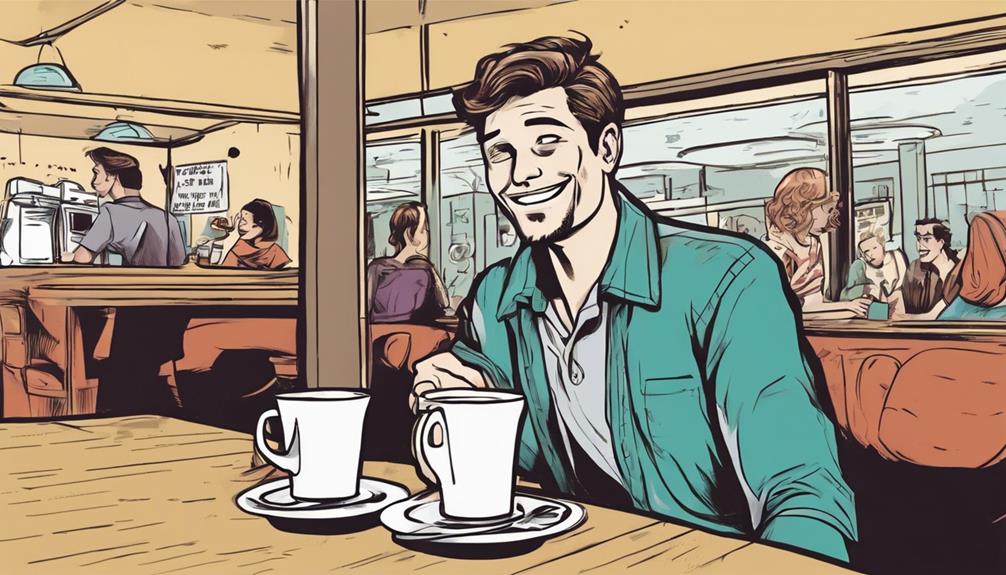
Approach the girl confidently to convey your interest in getting to know her over coffee while maintaining a respectful tone throughout.
When inviting someone for a coffee date, striking a balance between confidence and respect is crucial. Here are some key points to keep in mind:
- Confidence: Show that you're self-assured when extending the invitation, but avoid appearing overconfident.
- Respect: Acknowledge the other person's autonomy and feelings, ensuring that you approach the situation with consideration.
- Inviting Someone: Be clear and straightforward in your invitation, but also be understanding if the person declines or wants to reschedule.
- Maintaining Respect: Regardless of the outcome, continue to treat the individual with kindness and consideration, showing that you value their feelings above all else.
Scheduling the Date
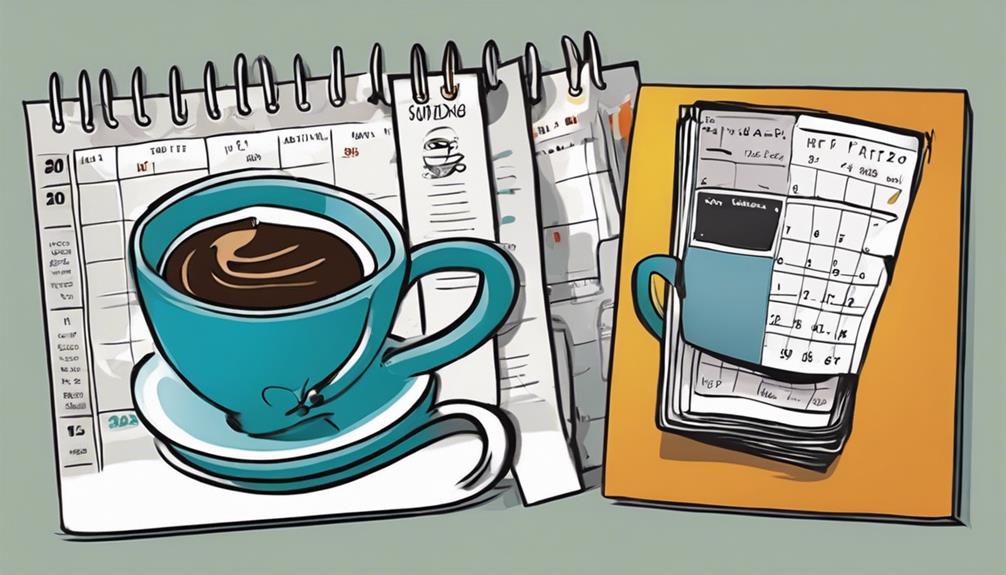
When scheduling the coffee date, propose a specific date and time that works for both of you. Consider their schedule and availability to guarantee a convenient meetup.
Confirm the details to solidify the plans and remain flexible if adjustments are needed.
Date and Time
Consider suggesting a particular date and time that aligns with both your schedules when inviting someone for a coffee date. To make the process smoother and increase the likelihood of a successful meetup, follow these guidelines:
- Propose a Specific Time: When reaching out to ask for a coffee date, be sure to propose a specific time frame such as 'How about grabbing a cup of coffee this Saturday morning?' This shows initiative and makes it easier for the other person to respond with their availability.
- Within the Coming Week: Aim to schedule the coffee date within the coming week to keep the momentum going. Waiting too long might lead to a loss of interest or availability conflicts.
- Verify Details: Once the other person agrees to the proposed date and time, verify the details such as the exact location and any preferences they might've for the coffee meetup.
- Establish a Clear Plan: To avoid any misunderstandings, make sure that both parties are clear on the finalized plan for the coffee date, including the time and venue. This clarity reduces the chances of last-minute cancellations or confusion.
Venue Selection
To plan the perfect coffee date, focus on choosing a venue that complements the relaxed and engaging atmosphere you aim for, making sure a comfortable setting conducive to meaningful conversation.
When selecting a spot for your coffee date, go for a cozy coffee shop downtown or explore a new venue together for a casual and inviting ambiance. Look for locations that promote conversation and provide a practical environment where you both can unwind and enjoy each other's company.
It's vital to pick a place that aligns with both your preferences to guarantee an enjoyable coffee meetup. Consider informal spots that offer coziness and are suitable for getting to know each other better.
Preparing for the Invite
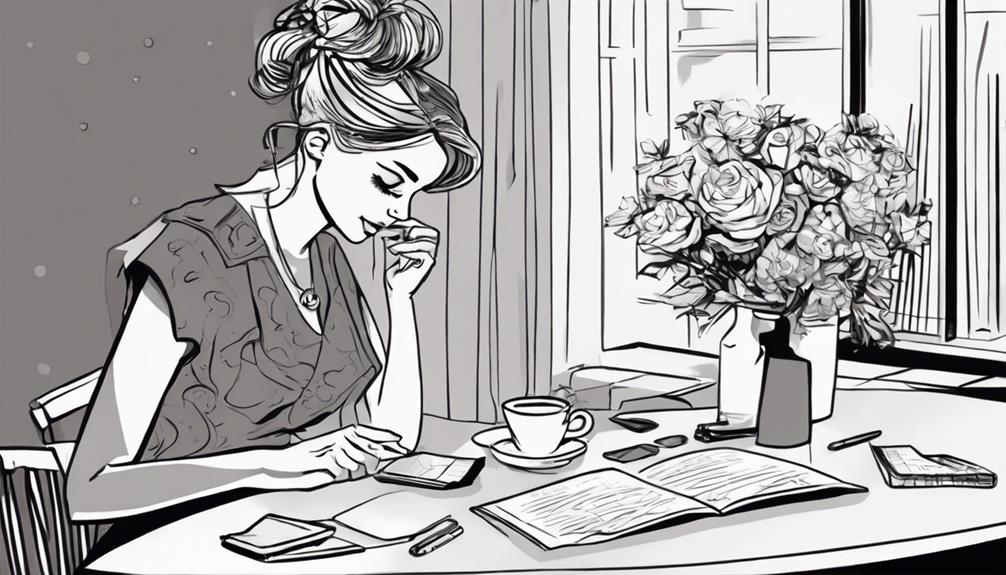
Select a suitable time and place beforehand to lessen any last-minute stress or confusion when preparing to ask someone for a coffee date. Making these arrangements in advance can help you focus on the conversation and enjoy the moment.
Here are some tips to help you get ready for the invite:
- Plan Ahead: Make sure you have a few potential dates and times in mind that work for both of you.
- Choose a Cozy Spot: Opt for a coffee shop that has a relaxed and cozy ambiance to set the right mood.
- Practice Your Approach: Think about how you'll ask the person out for a coffee date to guarantee clear and gentle communication.
- Stay Positive: Approach the invite with a positive mindset and remember the benefits of a coffee date, like a casual setting for easy conversation.
Observing Body Language
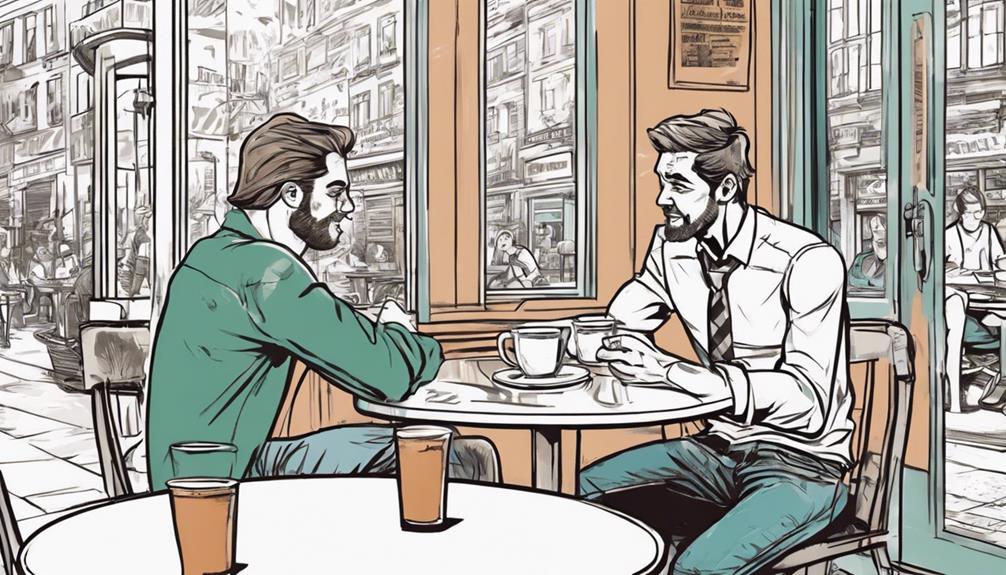
When preparing to ask someone for a coffee date, pay close attention to their body language cues as they can provide valuable insights into their level of interest and receptiveness. Observing body language is key in gauging whether the person is open to the idea of a coffee date. Engaging eye contact is a positive sign that the individual is interested in your conversation and may be receptive to your invitation. On the other hand, disinterested facial expressions, such as frowns or eye-rolling, could indicate that the person is not enthusiastic about the prospect of a coffee date.
To help you better understand these cues, refer to the table below for a quick overview of what to look for in body language when considering asking someone out for a coffee date:
| Positive Indicators | Negative Indicators |
|---|---|
| Smiling back | Disinterested facial expressions |
| Longer eye contact | Eye-rolling |
| Open body posture | Turning away |
Assessing Interest Levels

When gauging interest levels during a conversation, pay close attention to subtle cues like smiling and eye contact.
These positive signals can indicate receptiveness to the idea of a coffee date.
Conversely, if you notice disinterested or negative expressions, it may be a sign that the person isn't interested in pursuing a coffee date with you.
Interest Signals Interpretation
Assess interest levels by observing non-verbal cues such as smiling back or reciprocating eye contact. When trying to gauge someone's interest in a potential coffee date, paying attention to their non-verbal signals can provide valuable insights into their receptiveness.
Here are four key indicators to look out for:
- Reciprocating Eye Contact: If the person maintains eye contact and seems engaged, it could signify interest in getting to know you better.
- Body Language: Open and relaxed body language, such as facing towards you and leaning in, can indicate a positive attitude towards the conversation.
- Facial Expressions: Genuine smiles and expressions of interest can show that the person is enjoying the interaction and may be open to the idea of a coffee date.
- Engagement in Conversation: Active participation, asking questions, and showing enthusiasm in the discussion are positive signs that the person is interested in further interactions.
Non-Verbal Cues Analysis
Observing non-verbal cues, such as body language and facial expressions, can provide valuable insights into someone's interest levels during a conversation. Paying attention to these cues is crucial when you invite someone for a coffee date.
Positive indicators like smiling back and maintaining longer eye contact signal a high level of interest in the interaction. On the other hand, disinterested or disgusted facial expressions can be red flags indicating low interest levels.
Additionally, group outings can help alleviate pressure and give you a better understanding of the overall interest being shown. By being attuned to non-verbal cues, you can gauge receptiveness and engagement accurately.
Gestures Indicating Receptiveness
To gauge someone's receptiveness and interest levels, pay close attention to their non-verbal gestures during the conversation.
When evaluating their openness to a coffee date, consider the following:
- Genuine Smile: A genuine smile in response to your invitation is a positive indicator of receptiveness. If they smile warmly and seem pleased by the idea, it's likely they're interested in spending time with you.
- Extended Eye Contact: Extended eye contact during the conversation suggests a high level of interest in engaging with you. If they maintain eye contact and seem focused on the discussion, it indicates they're receptive to your proposal.
- Facial Expressions: Negative or disinterested facial expressions might indicate a lack of receptiveness to your coffee date invitation. Look for signs of boredom or discomfort, as these can suggest a lack of interest.
- Group Outing Invitation: Inviting the person to join a group outing can help alleviate any pressure and evaluate their interest level. If they show enthusiasm for the group event, it could be a good opportunity to determine if they're receptive to spending one-on-one time with you.
Providing Value Before Meeting
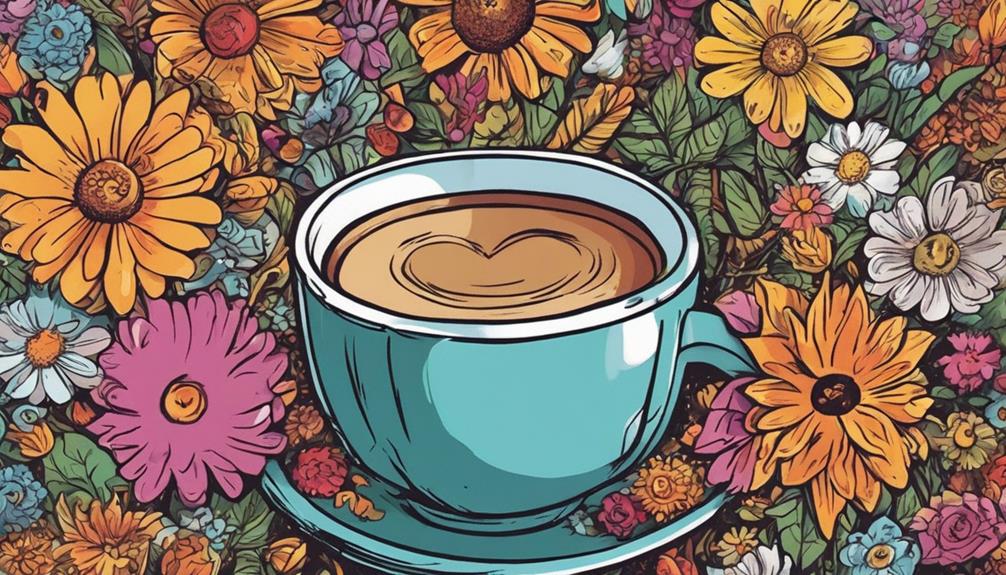
Initiating a coffee date request by offering value beforehand can greatly enhance your chances of securing a meeting. When you know someone you'd like to invite for coffee, keep in mind that providing value first shows respect and consideration towards them.
By offering something of worth before asking for their time, you demonstrate that the meeting is a priority and that you value their time. This gesture also sets the tone for a mutually beneficial exchange during the coffee date, fostering a positive and productive interaction.
It's essential to make sure that the value you provide aligns with the interests or needs of the person you wish to meet, increasing the likelihood of them accepting your invitation. Additionally, suggesting a public setting for the coffee date can make the other person feel more comfortable and safe, especially if you aren't yet well acquainted.
Young professionals who approach coffee invitations with value are often perceived as proactive and respectful, increasing their chances of being prioritized for a meeting.
Effective Email Request Strategies

When composing your email request for a coffee meeting, make sure to start with a clear introduction and context to provide background for your ask.
To make your email request effective, consider the following strategies:
- Specify Purpose: Clearly state the reason for wanting to meet for coffee, avoiding any ambiguity or confusion.
- Acknowledge Time Constraints: Recognize the recipient's busy schedule and express gratitude for their consideration.
- Limit Time Commitment: Request a specific and limited duration for the coffee meeting to show respect for the recipient's time.
- Be Flexible: Make it convenient for the recipient by suggesting a few possible time slots or allowing them to choose a time that works best for them.
Frequently Asked Questions
How Do I Ask Someone for a Coffee Date?
To ask someone for a coffee date, simply express your interest in getting to know them over coffee. Be direct, propose a specific time and place, and approach with confidence and respect. Be prepared for any response.
How Do You Politely Invite Someone to Coffee?
So, you want to charm someone with a coffee invite? Simple! Just ask them casually. "Hey, want to grab coffee sometime?" Pick a cozy spot, suggest a time, and exude confidence. You got this!
How Do You Politely Ask for a Coffee Chat?
To politely ask for a coffee chat, express interest in getting to know them over coffee. Propose a specific time and date. Use clear language and suggest a comfortable setting. Keep it straightforward to avoid confusion.
What Is the Best Way to Ask Someone Out for Coffee Platonically?
Want to ask someone out for coffee platonically? Simply express your interest in a friendly manner. Keep it casual and choose a cozy spot for a relaxed chat. Suggest a specific time and date to solidify plans effortlessly.
Conclusion
To sum up, asking someone for a coffee date can be as simple as finding a casual spot and showing genuine interest in getting to know them better.
Did you know that over 80% of successful relationships start with a simple coffee date?
So don't be afraid to take that first step and ask someone out for coffee – you never know where it might lead!
